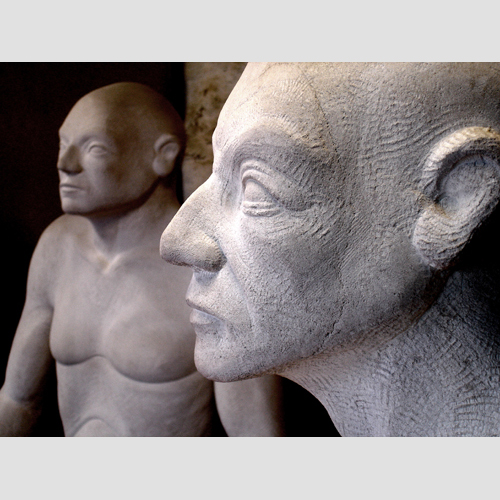 |
 |
|
Square 1999-2005
Portland limestone, Overall diameter: 3500mm X 3500mm X 1450mm |
 Square (work in progress 2004) |
The defined space of the Square provides a perfect platform for this group of figures. The four figures were carved out of irregular blocks of Portland stone. The blocks were roughly cut and they where different in size and proportion. The sitting position which all the figures have in common corresponds to the way one sits on a Persian carpet. The figures are slightly animated and quite distinct. The overall composition of the figures in relation to one another is arbitrary. They can be placed in different areas of the platform and they do not need to follow the formality of the square shape however the figures in relation to one another create the four corner of a shape which reflects the possibility of a square. The definition of Square in geometry is that of a two-dimensional figure with four sides of equal length and four right angles. It is one of the very first proportional systems used by the Ancients and the magical properties of the root 2 proportional systems were fully explored in Art and Architecture. Square is easily derived from a circle, it contains a series of harmonic squares and in rotation it can create octagon which leads to an infinite number of possibilities in geometrical patterns. Indeed, Persian carpet and most of the Islamic art is based on the proportional properties of square, triangle and pentagon. The presence of a platform provides a finite space of significance for the figures. The figures are no longer in direct connection to the given architectural boundaries (i.e. the four corners of a gallery space) and therefore not subject to the rules of real. Square provides a fictional space. The rules of real is dictated by its current institutional position, it is attached to here and now. A fictional space is in distance, it is an intellectual property and it defines its own rules. |
|
| Home | Bibliography | Sculpture | Drawing |